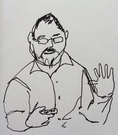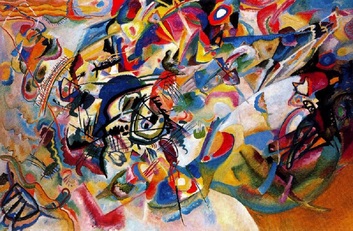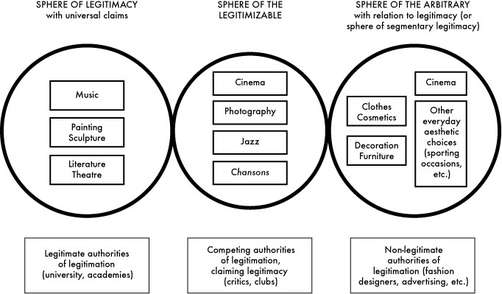Cognitive Neuroscience of aesthetics
 Marcos Nadal
Marcos Nadal I learned from Marcos that the field of knowledge in neuroesthetics has been increasingly growing over the past few decades, especially since we agreed that there is no SEEING without KNOWING. The notion of the viewer becoming an active perceiver (organizing agent, Gestalt psychology) rather than a pure visual recipient (empirical esthetics), and then the concept of Inner Vision by Semir Zeki grounded the way to modern neuroesthetics.
As he said, Marcos is mostly interested in aesthetics as a way to appreciate "beauty" (as opposed to a more global and formal definition of aesthetics). The data he presented suggest the influence of expertise, culural references, or context on the appreciation of beauty, documented by neuroimaging. For example, Marcos showed that the neurological pathways are diverted when viewers look at a picture of art they are told was authentic versus fake, or when a sponsor logo is copied next to the image (especially if the viewer was a non-expert).
I put Marcos' observations in relation with two other ways to look at the influence of the contemporary and historical contexts on art production: art and sociology.
Almost a century ago, Wassily Kandinsky stated, in The Doctrine of Internal necessity, that: "Inner necessity originates from three elements: (1) Every artist, as a creator, has something in him which demands expression (this is the element of personality). (2) Every artist, as the child of his time, is impelled to express the spirit of his age (this is the element of style)—dictated by the period and particular country to which the artist belongs (it is doubtful how long the latter distinction will continue). (3) Every artist, as a servant of art, has to help the cause of art (this is the quintessence of art, which is constant in all ages and among all nationalities)." Kandinsky here uses a very different language from Marcos to basically express the same overarching theme: the artist depends not only on himself, but also on the contemporary context he lives in and the history of painting. I find it fascinating to establish such a direct parallel between the neuroscientific and the artistic approaches.
As he said, Marcos is mostly interested in aesthetics as a way to appreciate "beauty" (as opposed to a more global and formal definition of aesthetics). The data he presented suggest the influence of expertise, culural references, or context on the appreciation of beauty, documented by neuroimaging. For example, Marcos showed that the neurological pathways are diverted when viewers look at a picture of art they are told was authentic versus fake, or when a sponsor logo is copied next to the image (especially if the viewer was a non-expert).
I put Marcos' observations in relation with two other ways to look at the influence of the contemporary and historical contexts on art production: art and sociology.
Almost a century ago, Wassily Kandinsky stated, in The Doctrine of Internal necessity, that: "Inner necessity originates from three elements: (1) Every artist, as a creator, has something in him which demands expression (this is the element of personality). (2) Every artist, as the child of his time, is impelled to express the spirit of his age (this is the element of style)—dictated by the period and particular country to which the artist belongs (it is doubtful how long the latter distinction will continue). (3) Every artist, as a servant of art, has to help the cause of art (this is the quintessence of art, which is constant in all ages and among all nationalities)." Kandinsky here uses a very different language from Marcos to basically express the same overarching theme: the artist depends not only on himself, but also on the contemporary context he lives in and the history of painting. I find it fascinating to establish such a direct parallel between the neuroscientific and the artistic approaches.
More recently, Pierre Bourdieu approached the interactions between culture and the production of art with a sociological eye (The Field of Cultural Production (1993) and The Rules of Art (1996)). For example, he categorized the legitimacy of various types of art production depending on who defines it, from academia to "non legitimate" authorities such as advertising (see picture below). These observations put another light on the influence of culture and context on art, again complementary to Marcos and Kandinsky.
I could go on an on, and look at how to address the same question with an archaeologic or an anthropologic eye... The influence of culture (contemporary and historical) on vision could be a great theme in itself for a future International Conference on Neuroesthetics!
This is part of a series of posts on the 11th International Conference on Neuroesthetics (September 2014).


 RSS Feed
RSS Feed